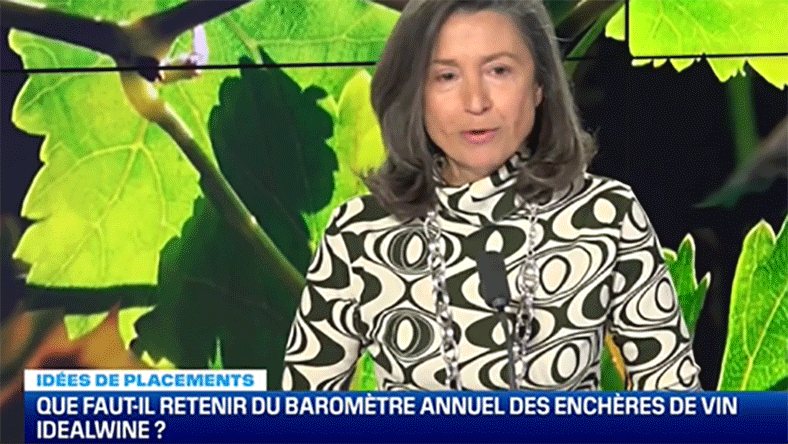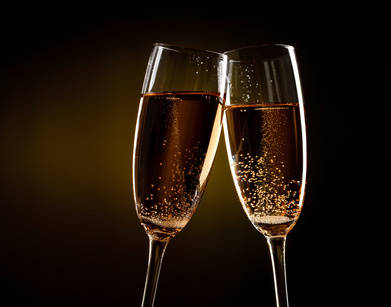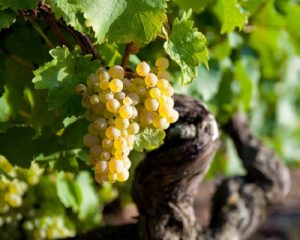
You’ve just released the 2022 edition of your Barometer, an analysis of the fine wine auction market. What does it have to offer to wine lovers putting together a cellar collection?
The Barometer is a goldmine for wine lovers! Almost 200,000 bottles went under the hammer via iDealwine last year, giving us plenty of figures and material to analyse. We hold a unique position in being able to draw such precise conclusions about the state of the wine market and predictions for its future.
You’ve got a kind of crystal ball?
It’s a bit like that, yes, and you have to know how to interpret it. The clients who buy in our auctions really have their finger on the pulse, so their choices and interests tell us a lot about what kind of wine is the most sought-after. We witness some intense bidding wars, just one example of how to spot a coveted producer. Taking all of these results into account gives us a really good picture of what a collector’s cellar looks like and what it might look like in the future.
But 2021 was an interesting one to say the least…
It was, and in so many ways! Amidst lockdowns and curfews, clients really increased their online purchases. 46% of wine enthusiasts now make purchases on the internet, compared to 31% in 2020, and this contributed to a record year of sales.
Did you see this same explosion at auction specifically?
We held 48 different auctions at iDealwine in 2021, compared to 41 the previous year, which comes to an average of four per month. The number of bottles auctioned increased by 7%, whilst in value the figures jumped by 17%, demonstrating a significant price effect. The average bottle price also went up to €139 (+9%).
Are buyers in Asia propelling this price increase?
It’s true that Asian clients returned in force throughout 2021 after a very sombre 2020. Asia accounts for 18% of our total sales figures, but we still have a solid base of French buyers who make up 49% of overall purchases.
How would you describe the fine wine auction market?
There are four points to bear in mind. Firstly, we’re mainly talking about a market of mature wines; 62% of vintages sold are over 10 years old. You have to wait a while for wines purchased in recent vintages to gain in value.
Secondly, it’s largely a market of red wines. In 2021, reds made up 76% of the bottles that went under the hammer. Traditionally, and stereotyping a little bit, these wines tend to age better, so they’re more long-term investments.
Thirdly, and this is something we can be proud of as a French company, it’s a market dominated by French wine. Almost 95% of the bottles we auctioned last year come from the Hexagon, showing how French winemaking remains THE reference on the secondary market.
The last point worth highlighting is that fine wine auctions are becoming increasingly ‘green’. 25% of the wines auctioned last year were made organically, biodynamically and/or naturally. This might look like a small percentage, but we should look at the wider context. Most estates have converted to organics in the past ten years, so when we consider the proportion of ‘young’ vintages sold at auction (relatively low), that 25% becomes more significant.
Let’s talk about the wines that really stand out, the must-haves for collectors. Burgundy, Burgundy, and more Burgundy, I imagine?
It’s true that Burgundy consolidated its position as the top wine region in value for 2021, making up 38.3% of our total sales (compared to 34% for Bordeaux). Volumes sold from this region have actually gone down by 7.7%, though.
Is Bordeaux distancing itself, then?
Not at all. Firstly, Bordeaux has held onto the top spot for volume sold, representing 40.5% of the bottles auctioned. In fact, these volumes increased by 21.5%, the sign of a real pick-up in interest for fine Bordeaux. We have to note that the region has lost none of its classic reputation.
But the most expensive wines are from Burgundy, right? With Romanée Conti leading the pack?
Yes and no…Domaine de la Romanée Conti was still the top estate at auction in 2021. Some 413 bottles from the domain went under the hammer throughout the year for a total sum of €1.5 million.
However, none of these bottles were the most expensive individually! That honour went to a 2006 Musigny from Domaine Leroy that fetched an astounding €28,244.
Plus, the highest bid of all was placed on a bottle that sums up all of the key trends in the fine wine market. A double-magnum of 2006 Echézeaux from Domaine Bizot sold for €41,752. A Burgundy, a Côte de Nuits wine, a red cuvée, and a natural producer.
There’s still a lot of talk about Bordeaux and Burgundy…should we focus on these two regions when putting together a cellar?
Not at all! We have to mention the Rhône valley, which accounted for 12% of sales last year. Château Rayas was actually the second best-selling property, too. These three regions together make up 84% of total value sold, but just 74% in volume. Among the remaining 26%, then, there are a whole host of investment opportunities for the collector to be interested in.
So is it wise to focus on the most expensive wines or more accessible ones?
It can be a good idea to go either way, a frustrating response, I know. At the moment, we’re seeing even the most expensive wines increase in value, with no sign of a slowing-down. The value of the Musigny I mentioned before soared by a huge 61% compared to the previous year. So it seems as though there’s even more room for prices to go up, especially from a region where rarity and quality make for a highly coveted combination.
Having said that, e mustn’t ignore the fact that every region has its gems, with certain estates recording unexpected levels of interest from wine lovers. This is why it’s worth keeping an eye on price estimates and reading the latest wine market news. It’s a very dynamic world! Of course, I would also recommend reading iDealwine’s Barometer if you want something comprehensive and in-depth…
Are there any particular regions that spring to mind?
Definitely the Loire, the Languedoc, and Beaujolais. The Jura is also a good spot if you’re interested in the natural wine movement. And looking beyond France, Italian wine is absolutely thriving at auction, too.
Discover our 2022 Barometer here



